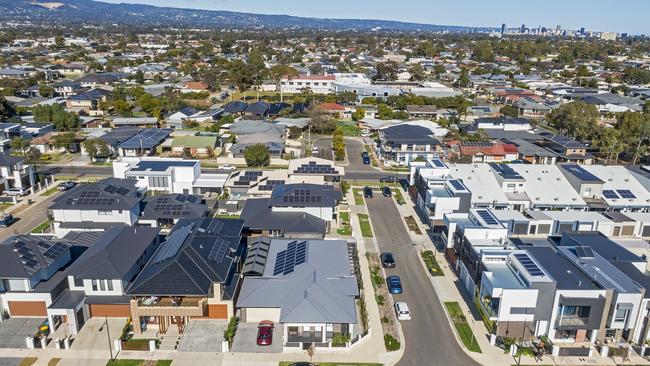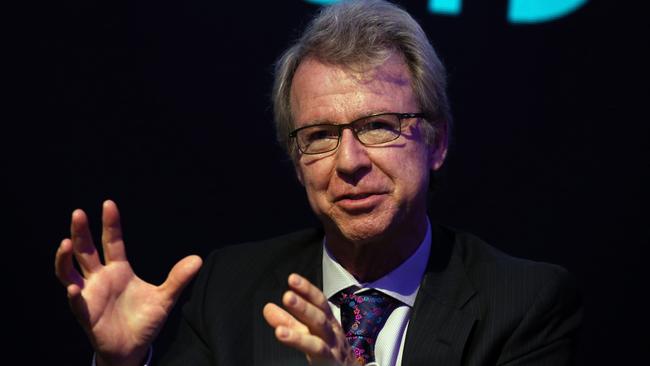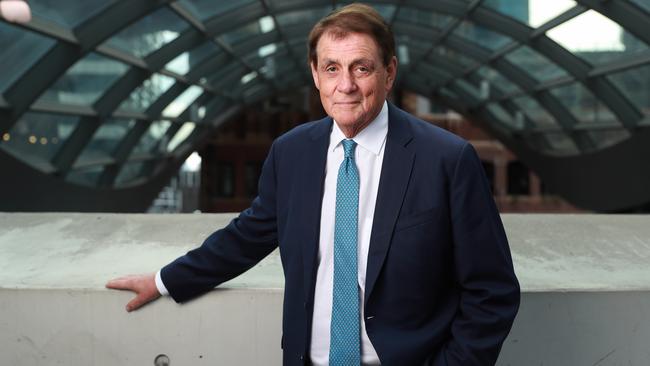Anything less than a 25 point cash rate rise is a bullish signal for markets
The RBA must weigh up inflation, retail sales, and the cumulative effect of its rate rises against higher-than-expected jobs and wages data. But how it’s likely to respond is a point of conjecture.

All eyes will be on the Reserve Bank on Tuesday as it weighs up lower-than-expected inflation and retail sales data, and the yet-to-be-felt impact of its rate increases on mortgage payments, against higher-than-expected employment and wages data and the impact of industrial relations reforms.
If the RBA board decides to lift the cash rate by less than the 25 basis points that economists expect, it will be interpreted as a sign that rate hikes have finished and an extended pause is likely.
If its statement is less clear about the board’s expectation that it will “increase interest rates further over the period ahead”, the market may continue to dial back its expectations for further rises.
Certainly, anything less than a 25 basis points rate increase would be short-term bullish for financial markets, which have priced in a further 75 bps lift in rates over the next 10 months.
Stocks and bonds have rallied a long way in the past two months – the S&P/ASX 200 is up 13 per cent and 10-year bond yield is down 83 bps – but a smaller rate hike could fuel a further rally, particularly while markets remain hopeful of a smaller US hike the following week.
A smaller RBA rate hike could also lessen the downside potential for share prices and bond yields next year, when a sharp slowdown in growth is expected alongside recessions offshore.
But house prices, employment and consumer spending have nowhere near fully reacted to the massive 275 bps lift in the cash rate from a record low of 10 bps in the past six months.
Barring an unexpected loosening of monetary policy, house prices and the real economy will continue to feel the impact of past rate rises for 12 months or more.
That’s particularly so because there’s a vast amount of fixed rate home loans expiring over the next year. Because of that, monetary policy is operating with an even greater lag than usual.
Even if the RBA doesn’t hike again next week, CBA and AMP economists say they won’t rush to change their forecasts of a 15-20 per cent peak-to-trough fall in house prices.

CoreLogic’s national home value index for November showed the national average house price had only fallen 7 per cent, or $53,400, from a record high of $767,875 in April.
A 15 bps rate rise could come as a result of the board being split between 25 bps and no change.
The board did consider a 15 bps move for its first hike in May.
One reason it saw for not doing 15 bps at that time was that it would be “inconsistent with the historical practice of changing the cash rate in increments of at least 25 basis points”.
Moreover, it may not want to do less than 25 bps unless it’s at the end of the tightening cycle.
The RBA may not want to signal the end of rate rises just yet.
Inflation remains well above its target, and the multi-employer bargaining unleashed by Labor’s new industrial relations reforms might increase the risk of a price-wage spiral.
But while a further slowdown in the pace of rate hikes is not expected by economists, it is seen as a distinct possibility by financial markets after sharply lower-than-expected monthly CPI data this week indicated that inflation has peaked, even though the monthly data have some serious limitations.
The money market was pricing in about 14 bps of rate hikes at next week’s meeting, as traders were split between no change and 25 bps, and a 15 bps increase was also seen as a chance.

AMP Capital chief economist Shane Oliver said he saw a 20 per cent chance of the RBA leaving rates unchanged, 20 per cent for 15 bps and a 60 per cent chance of 25 bps.
“They may leave a 15 bps for the very last move, and they may not want to send that sort of signal yet given the wages risk,” he said. “That said, I reckon Tuesday could still be the last move.”
CBA head of Australian economics Gareth Aird said the roughly 15 bps hike priced in by the market for next Tuesday “reflects basically the weighted probability of a 25 bps hike or no change”.
He saw an 80 per cent chance of 25 bps and a 20 per cent chance of no change from the RBA.
CBA’s Aird expects a shift in forward guidance that would see the RBA retain a tightening bias, but also pave the way for a potential pause in the tightening cycle in February 2023.
“Specifically, we anticipate the governor will soften the line from the November statement that ‘the board expects to increase interest rates further over the period ahead’,” he said.
“We think the key forward guidance statement will be changed to ‘the board is likely to increase interest rates further over the period ahead’ or ‘the board is willing to increase interest rates further over the period ahead’.”

Westpac chief economist Bill Evans said data since the November board meeting highlight that the labour market is tightening and wages growth is gathering pace, yet market pricing for the RBA eased significantly over the last week, with only 33 bps of hikes now priced by February.
“We confidently expect increases of 25 bps in both December and February,” he said.
Mr Evans said that while much weight is being given to the surprise drop in monthly inflation in the October Inflation Report — to 6.7 per cent on-year, from 7.3 per cent in September — and market expectations it would lift to 7.6 per cent, only 43 per cent of the components are updated monthly.
The rest are updated only once per quarter or even once per year.
“As such the resulting monthly volatility is becoming apparent in the series,” he added.
“That compares with the 1.8 per cent lift in headline inflation in the September quarter – indicating that inflation has not peaked, even in a quarterly sense.”




To join the conversation, please log in. Don't have an account? Register
Join the conversation, you are commenting as Logout